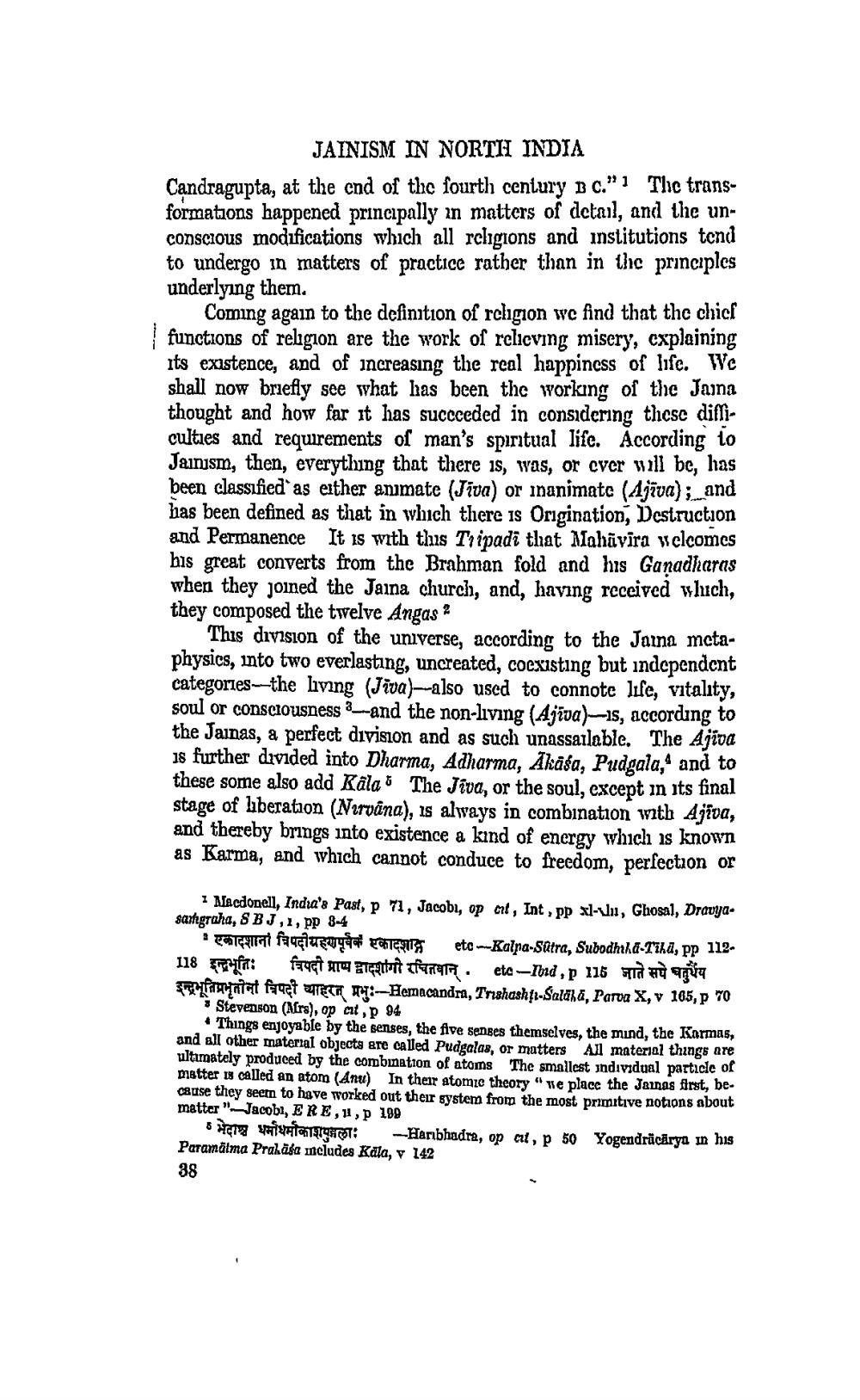________________ JAINISM IN NORTH INDIA Candragupta, at the end of the fourth century BC."1 Thc transformations happened principally in matters of detail, and the unconscious modifications which all rcligions and institutions tond to undergo in matters of practice rather than in the principles underlying them. Coming again to the definition of religion we find that the chief functions of religion are the work of relieving misery, cxplaining its existence, and of increasing the real happiness of life. We shall now briefly see what has been the working of the Jajna thought and how far it has succeeded in considering these difliculties and requirements of man's spirtual life. According to Jainism, then, everything that there is, was, or ever will be, has been classified as either animate (Jiva) or inanimate (Ujiva); and has been defined as that in which there is Origination, Destruction and Permanence It is with thus Tipadi that Mahavira welcomes his great converts from the Brahman fold and his Ganadharas when they joined the Jaina church, and, having received wluch, they composed the twelve Angas 2 This division of the universe, according to the Jarna metaphysics, into two everlasting, uncreated, coexisting but independent categories the Living (Jiva)-also used to connote life, vitality, soul or consciousness and the non-living (Ajiva) --s, according to the Jainas, a perfect division and as such unassailable. The Ajiva is further divided into Dharma, Adharma, Akasa, Pudgala, and to these some also add KalaThe Jiva, or the soul, except in its final stage of hberation (Nirvana), is always in combination with Ajiva, and thereby brings into existence a kind of energy which is known as Karma, and which cannot conduce to freedom, perfection or Macdonall, Indra's Past, P 71, Jacobi, op cit, Int , pp xl-ku, Ghosal, Dravyasangraha, BJ, 1, pp 8-4 Chcet feluwya Tent eto --Kalpa-Sutra, Subodhuha-ria, pp 112118 ruft: fructe tegit F e te -Ibid, p 115 Ta Hu agua sufrutat farvet WETET :-Hemacandra, Trishaskfl-Salda, Parva X, v 165, p TO * Stevenson (A[rs), op cit, p 94 * Things enjoyable by the senses, the five senses themselves, the mind, the Kormas, and all other material objects are called Pudgalas, or matters All material things are ultimately produced by the combination of atoms The smallest individual particle of matter 13 called an atom (Anu) In their atomic theory "we place the Jainas first, because they seern to have worked out their system from the most primitive notions about matter"-Jacob), ERE, 11, p 199 wetu w atatur: -Haribhadra, op at, p 50 Yogendracirya mn his Paranalma Prakafa ncludes Kala, v 142 38




